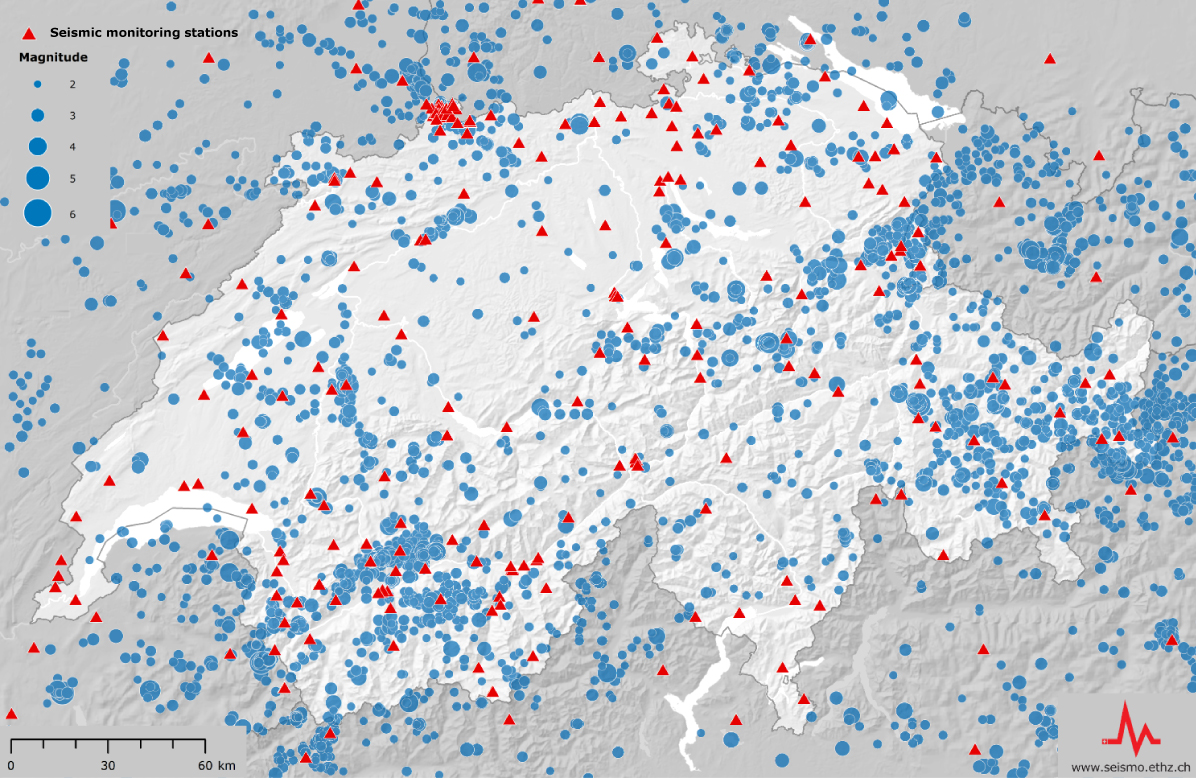2020-12-11
Swiss federal action plan for earthquake mitigation celebrates 20th birthday
Exactly 20 years ago, the Swiss Federal Council approved the federal action plan for earthquake mitigation, in an acknowledgement that in Switzerland, despite the substantial damage an earthquake could cause, the risk of such an event is all too often underestimated. Under the supervision of the Federal Office for the Environment's Coordination Centre for Earthquake Mitigation, the action plan has been further developed on a rolling basis since then and implemented within the competence of the federal government. As the federal agency for earthquake monitoring, the Swiss Seismological Service (SED) at ETH Zurich has played a vital role in establishing an integrated earthquake risk management system in Switzerland.
One key plank of risk management that has been rolled out over the past 20 years as a result of the action plan is the expansion and modernisation of the national seismic network. This now consists of more than 200 seismic monitoring stations, meaning that seismic activity in Switzerland and neighbouring countries can be recorded comprehensively and in real time. This not only helps to ensure that the authorities, the public and the media can be alerted quickly when an event occurs – it also steadily improves the accuracy of earthquake hazard assessments. Seismic hazard models using state-of-the-art techniques and technology and updated in real time play a key part in further improving earthquake mitigation in Switzerland.
Read more...The Federal Council adopted the federal action plan for 2021–24 at its meeting on 11 December 2020, reflecting the federal government's desire to further consolidate earthquake mitigation. Over the next four years, this will see, among other things, precautionary planning for earthquakes and quality assurance for earthquake-resistant construction stepped up. Comprehensive information about the earthquake hazard situation in Switzerland is now available and can be accessed by the public. However, the financial and personal risks that can be expected in the event of an earthquake are still largely unclear because not enough is yet known about the influence of the local subsoil and the vulnerability of buildings, nor are these details available across the country. In this light, the SED is currently developing an earthquake risk model for Switzerland in collaboration with the Federal Office for the Environment and the Federal Office for Civil Protection. Due to be published in 2022, this model is intended to serve as a basis for the federal government and the cantons in the future, with a view to obtaining a quick overview of possible damage in the event of an earthquake. It draws on the regularly updated earthquake hazard assessment and takes into account the influence of the local subsoil as well as the vulnerability and value of buildings and infrastructure. In addition, the earthquake risk model can be used by private companies such as insurance providers to improve their own assessments and services.
Learn more:
-
Press release [available in DE, FR and IT]
